Trudy J. Morgan-Cole's Blog, page 35
July 18, 2021
Just Ignore Him, by Alan Davies
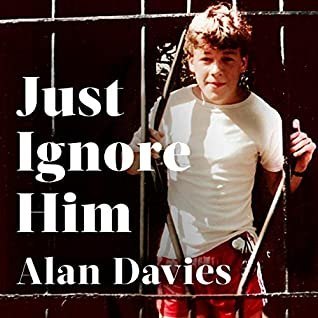
If you don’t already know how Alan Davies is, you might never stumble across this book. If you do know Alan Davies as an English comedian and actor, best known as quirky amateur detective Jonathan Creek, and long-time permanent panelist on the quiz QI (as himself), you might pick this up expecting the usual comedian autobiography/memoir. Some touching/funny/troubling stories from childhood and youth, anecdotes about getting into show business, pithy and amusing observations on life.
THIS IS NOT THAT BOOK.
It’s a very good book, and one I’m very glad to have read (or listened to, actually) but it’s very important to know what you’re getting into. Davies has apparently done the light, funny-observations memoir thing before, in a book called Teenage Revolution which I haven’t read, but a series of events which he outlines in Just Ignore Him led him to revisit his childhood and teenage years and write a much more honest memoir about the emotional, physical and sexual abuse he experienced from his father after his mother died when Alan was just six years old. This books is raw, painful, often difficult to read or listen to, but it is an unforgettable depiction not just of childhood abuse, but of the difficult decisions around how, as an adult, you’re going to process and deal with that abuse. There are definitely funny moments in here, but they are in the minority as the subject matter is very serious and is treated with the seriousness it deserves. Not an easy book by any means but a powerful one.
Wait for God to Notice, by Sari Fordham
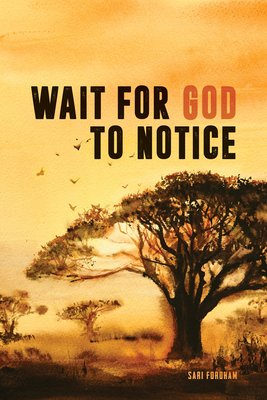
This is a beautifully written, thoughtful memoir about author Fordham’s experience growing up in a Seventh-day Adventist missionary family in Uganda during the reign of Idi Amin. Specifically, it focuses on Fordham’s mother, Not only is it a pleasure to read, Wait for God to Notice is also an example of the kind of nuanced writing about faith and religion that we have not seen nearly enough of from Seventh-day Adventist writers.
This is a topic I have a lot of opinions on and will probably expand on in a longer piece sometime, but I’ve long felt that there are two common ways to write about religion that are not particularly interesting to me — the “everything is wonderful!” approach favoured by Christian publishers and bookstores, and the “everything is terrible” approach common in lots of mainstream novels and memoirs where people explore the damage done by religion. I’m not saying it’s not valid to explore that damage, anymore than it’s not valid to write about your positive faith experiences in a book that might sell in a Christian bookstore. There’s a place for both, but the place is unlikely to be on my shelf of best-loved books. What interests me are books about faith that explore both the dark and light sides — the power of belief that keeps people connected to their faith tradition, and the negatives (ignorance, fear, abuse, etc) that drive them away. That tension is what interests me; Chaim Potok’s is my favourite classic example of a book that does this well in the contexts of Hasidic Judaism, but it’s handled well in more recent works too, such as the evangelical Christian backgrounds of books such as Yaa Gyasi’s Transcendent Kingdom and Joan Thomas’s Five Wives.
I rarely see that tension and nuance well reflected in the writing of people in my own faith tradition (I have, of course, tried to do it myself a little bit, both in historical and contemporary fiction). Most Adventist writers have generally published with church publishers, which places their (our, for part of my career) books firmly in the “everything is wonderful category”; a too-realistic criticism of the church is not going to fly with a church press. I doubt whether Sari Fordham’s criticism of the church leadership that left her family in an unsafe mission post (respectful though that critique is) would have passed an editorial board at a church publishing house. But this nuanced, insightful memoir, focusing particularly on the character of Fordham’s mother, is unflinching in portraying both the family’s faith, and the limitations of that faith. The naivety of missionaries and the people who send them to places like Uganda is clearly on display here – not caricatured, as in a novel like Barbara Kingsolver’s Poisonwood Bible, but portrayed with the understanding of someone who has lived through it. There’s so much more I could say about this book, which I thoroughly loved reading, but I will just say that I recommend it very highly.
July 1, 2021
How the Word is Passed, by Clint Smith
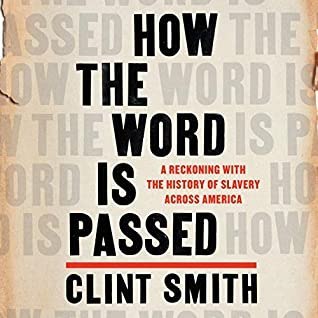
I know I’ve raved about several great books I’ve read about the history of anti-Black racism, and Black history, in the United States, but I’ve got to move everything on that bookshelf over a little make room for How the Word is Passed — and specifically for the book in the format in which I read it, the audiobook narrated by the author.
How the Word is Passed is about history and memoir. Author Clint Smith visits several sites — mostly, but not exclusively, in the American South — and explores both the Black history that occurred at that site, and how that history is commemorated today. The journey takes us to former plantations and slave markets, to a graveyard filled with Confederate soldiers, to the site where the famous “Juneteenth” emancipation proclamation was read in Texas, and to an island in Senegal where captured people were held before being shipped off to a life in chains. There is a lot of valuable history here, but there’s also some important reflection on how we do and don’t tell the stories of our history. There’s also beautiful writing — Smith is a poet (even if you don’t think you know who he is, you may have read some of his poems online, particularly the often-shared “When people say ‘we have made it through worse before’.”) The poetry of his prose is evident in this book’s beautiful and evocative descriptions and reflections, and is made even more evident by the author’s wonderful reading of the audiobook.
I highly, highly recommend this book.
June 29, 2021
The Jasmine Throne, by Tasha Suri
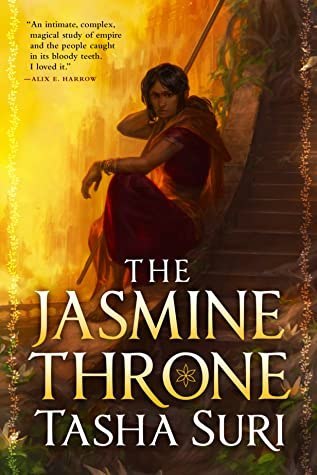
The Jasmine Throne is the first volume of what promises to be a wonderful, sweeping, epic fantasy series set in an Indian-inspired world and featuring two powerful and unforgettable heroines. Malini is the emperor’s sister, imprisoned for disloyalty and marked for a terrible fate. Priya is, apparently, only a servant girl, but in fact she is much more. When these two women cross paths and join forces — and fall in love — sparks fly, and an empire might just fall.
I found this a beautiful, engaging fantasy novel that left me eager for the next volume in the series.
June 28, 2021
Castle Shade, by Laurie R. King
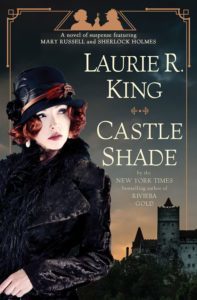
Castle Shade is the 17th installment in Laurie R. King’s series about an aging Sherlock Holmes and his much younger wife Mary Russell. I’ve read them all (though haven’t reviewed all of them here on the blog) and they are pretty reliably enjoyable, particularly as King finds a new and interesting location for pretty much every book. During the events of Castle Shade, Holmes and Russell have canonically been detecting partners for 10 years and married for 5, so with 17 novels in that time span, they rarely get a break from murders and other mysteries.
This latest installment finds the pair in Romania, where we get an introduction to the fascinating historical character of Queen Marie of Romania, and her Castle Bran, which some people think is (but almost certainly was not) the inspiration for Dracula’s castle in Bram Stoker’s novel. Strange things have been happening at Castle Bran, and while the very logical Holmes and Russell are not likely to fall for tales of vampires and witches, they have some investigating to do to find out what’s actually happening.
June 27, 2021
One Last Stop, by Casey McQuiston

One Last Stop is a sweet, funny, heartfelt romance with a lightly paranormal/sci-fi twist, by the author of Red, White, and Royal Blue. Twenty-three year old August has just moved to New York City, transferring colleges for the third time and renting a room in an apartment shared by a colourful group of housemates she has no intention of becoming friends with. Due to some quirks in her childhood — August’s mother has spent most of her life trying to track down a missing person — August has never really learned the knack of making friends. But, as you might expect, that begins to change over the course of the novel, especially when she meets a mysteriously attractive girl on the subway.
This is a sweet queer romance, a bit of a time-travel story (though not quite), and a story about friendship, chosen families, and finding your own place in the world. The only thing that struck an odd note with me was the time setting of the story. Just released in June 2021, the novel was obviously well underway before the pandemic began, but it’s set in 2020. Even if most of the writing was finished a year ago, there certainly would have been time in editing for McQuiston to make the tiny tweak of moving the story’s action back to 2018 or 2019 (it’s a very contemporary story, but a year or two earlier wouldn’t have hurt it). Instead, it’s set in New York City during the one year in contemporary history when most of the story’s events – which unfold in busy restaurants, on crowded subways, at parties, at bars, at drag shows — literally could not have happened. One possible answer to the “how do we write about 2020?” problem is, of course, to just pretend it didn’t happen, and that’s the route McQuiston has taken here. That’s fine, of course — she’s already playing with reality by creating a story in which someone could be stuck on a subway for over 40 years — but when I realized that the story began in fall 2019, as the months progressed I was bracing myself for a story with NYC in lockdown and August unable to leave her apartment and ever find Jane on the subway again. It was kind of a relief that that didn’t happen, but a little weird. However, that tiny temporal weirdness did not at all diminish my pleasure in this sweet, heartwarming coming of age story.
June 18, 2021
Somebody’s Daughter, by Ashley C. Ford
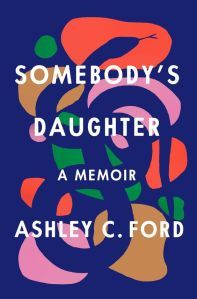
Ashley Ford — someone I’ve previously known of just as an “internet person,” although I knew she was a writer — this is her first book, but I know her mainly from Twitter — has written a thoughtful memoir about her childhood and youth. It is about her relationship with her mother, a woman struggling with her own challenges and trying to raise her children the best way she can; with her loving and strong-willed grandmother, and, in a way, with her absent father. Ford’s father was incarcerated throughout her childhood, and remains a shadowy but important presence until much later in the book, when as a young adult she goes to see him and begins the process of figuring out what his place is in her life. It’s also about poverty, and abuse, and racism, and sexism, and sexual assault.
One of the most compelling things about this story is one I wish had been explored more, and more explicitly. Ford’s father is imprisoned for raping two women; as she says many times in the book, it is not her place to forgive him for crimes against other women, but she has to figure out whether and how she can live with a father who clearly loves his daughter yet has assaulted other women. Alongside this we see the story of Ford’s own rape at the age of thirteen, when she was assaulted by a boy she had been friends with, while one of his friends watched the attack. The tension between the author being a rape survivor herself, and being the daughter of a man sentenced to prison for raping women, is present throughout the second half of the book, but I wanted to see it addressed more explicitly. However, the things I want to see in a book, particularly in a memoir, are not necessarily the things the author wanted to write about — this is Ford’s story, told in her own way, and it is well worth the read.
The Other Black Girl, by Zakiya Dalila Harris
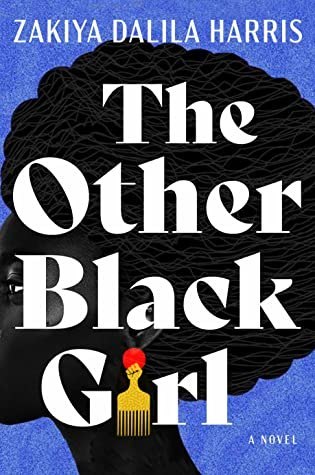
The Other Black Girl was an intriguing and fast-paced read that at first seems to be about race and office politics. The main character, Nella, has been working for some time as the only Black editorial assistant in a prestigious publishing house. But when the “other Black girl,” Hazel, begins working in the cublicle across from hers, Nella’s pleasure in having an office ally quickly becomes more complicated. It’s, perhaps, to be expected that there might be some competition between these two women, and some effort for the company’s all-White management to play them off against each other. But what Nella finally uncovers about Hazel’s motives is much more sinister, and takes the story in a somewhat different direction that might even bend our expectations of its genre a little bit.
Hazel’s backstory, and the revelation of what Nella is really up against, is revealed through flashback chapters inserted into Nella’s account, and the more tense, thriller-like aspects of the story unfold gradually, both for Nella and for the reader. That almost-but-not-quite-sci-fi twist in the story — yes, it’s still about racism and office politics, but in a way the reader might not have predicted — didn’t come together quite as neatly as I’d hoped it would by the end of the novel, but it is still a very interesting book that kept the pages turning and raised some important issues along the way.
June 2, 2021
Old Baggage, by Lissa Evans

This novel, which I picked up almost at random from the e-library after seeing a single reference to it on Goodreads and knowing nothing about the author, turned out to be wonderful. It’s set in London in 1928, and I absolutely loved the characters: Mattie, a former suffragette firebrand who’s been through marches, protests, and prison, and now wonders “what next” in a world where (some) women have the vote yet real change still seems far away; Mattie’s friend and housemate Florrie Lea (“The Flea”), also a suffragette but of a quieter sort, who now works as a Health Visitor trying to help the poorest families in the city; teenage Ida, who ends up working as their housemaid but is also the focus of Mattie’s plans to educate and improve the next generation of young women. When an old friend, another suffrage sister who has decided that what the youth of England really need is a good dose of fascism, enters their lives, Mattie finds a new sense of purpose in trying to combat this vision — but her own personal weaknesses and blind spots lead her to make an error that affects everyone’s lives.
All of these characters were engaging and interesting to me, and the backdrop against which their story is set — what’s the next move when you’ve achieved the goal you spent the first half of your life fighting for? how do you continue to make a difference? can you ever recapture that thrill of working as part of a united movement? — also fascinated me. I highly recommend Old Baggage.
Tales from Lindford, by Catherine Fox

This is the second of two books that, for me, were the best possible literary summations of 2020 and the best possible answer to “should writers write about the pandemic?” (the other being the last book I wrote about, The Anthropocene Reviewed). This book, Tales from Lindford, is far more directly a “pandemic book” than the other one was, being a novel both written and set in 2020, posted on the author’s blog in installments almost in real time, then crafted into its final book form for release in May 2021.
That being said, when author Fox decided to revisit the characters from her Lindchester trilogy (one of my favourite book series of recent years), Covid-19 was just one of many worries hovering in the background, one of many things that might affect her characters in 2020 along with Brexit, the US elections, and all the everyday cares and worries of daily life. Reports of a worrying new virus were, as the narrator suggests early in the book, distant hoofbeats of a possibly apocalyptic horseman.
As the year and the story unfolded, the clergy and laypeople of the diocese of Lindchester, like the rest of us, ended up spending far more time isolated in their homes than anyone could have imagined. Keeping characters physically isolated and unable to spend time together no doubt posed a narrative challenge, but it’s one that Fox rises to brilliantly, using her characters’ 2020 stories as a vehicle to explore all the things explored in her previous stories — love, faith, fear, the power of connections both human and divine in a world of conflict, fear and uncertainty. But in this book, the quiet adventures of Freddie and Ambrose, Matt and Jane, Father Dominic and his aging mother, and especially (as they are central to the narrative), teenage Leah, pre-teen Jess, and their estranged parents Martin and Becky — and all the rest of the characters — play out against the backdrop of the pandemic. The 2020 setting heightens and sharpens questions about what it means to be a person of faith, or a person without religious faith but with faith in humanity. What does it mean to be the church when church doors are closed? How do we reach out to others when we can’t reach out physically? Tales from Lindford offers insight, humour, wry social commentary, and more than a few tears, as the characters travel through the unexpected twists and turns of 2020. I enjoyed every bit of the ride, both when I read them in serial blog form, and when I sat down and read through the entire finished book.



